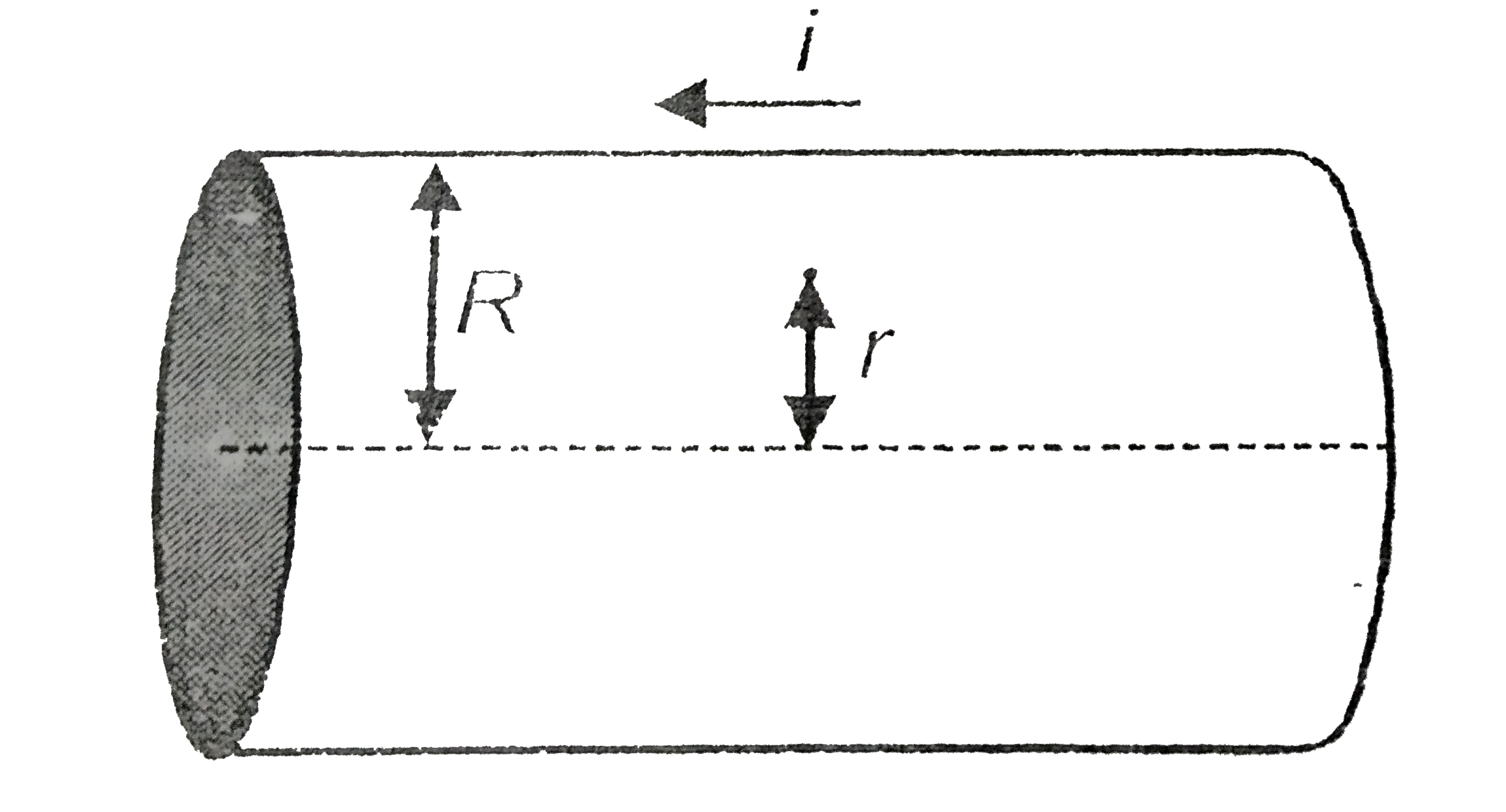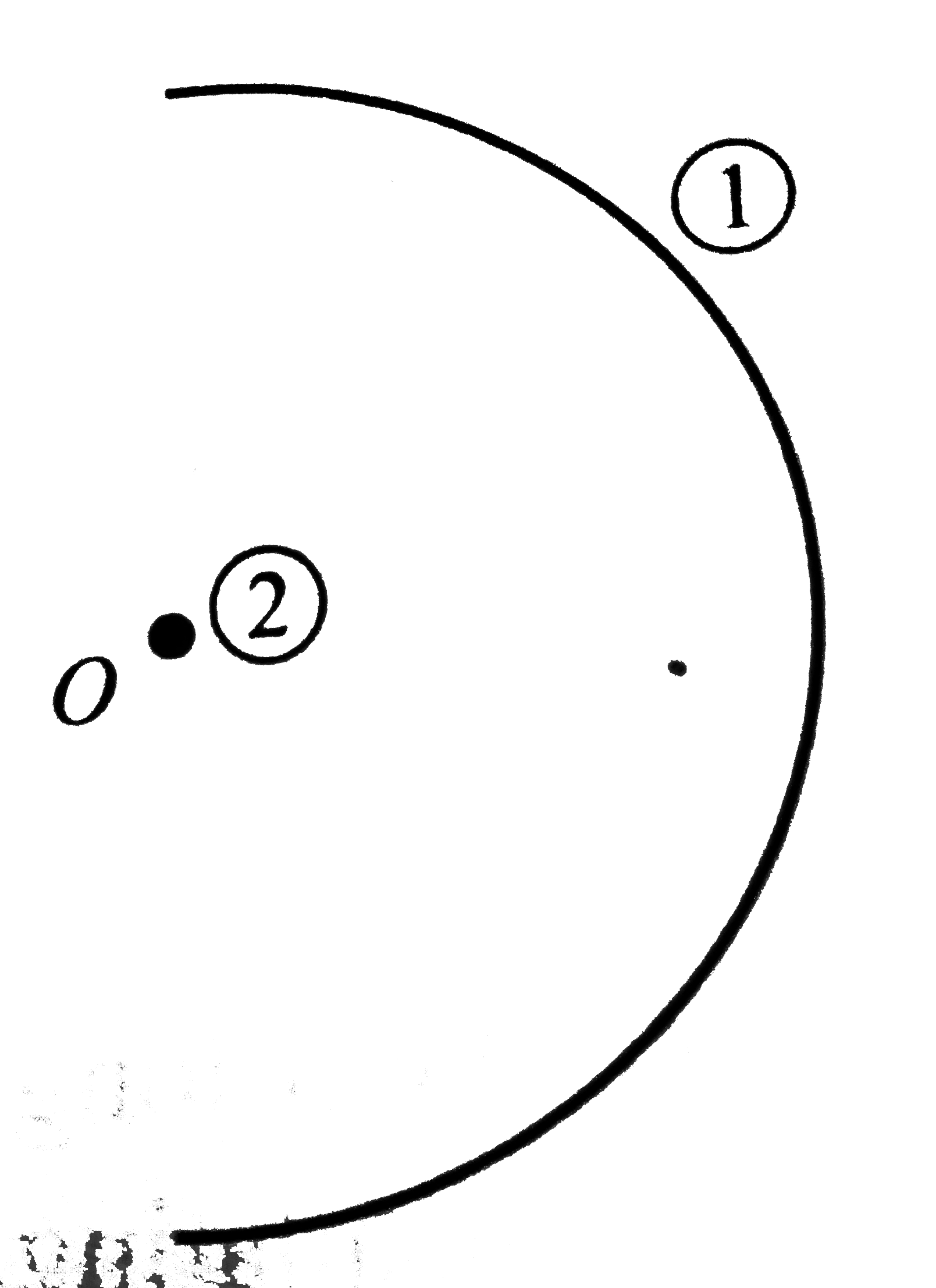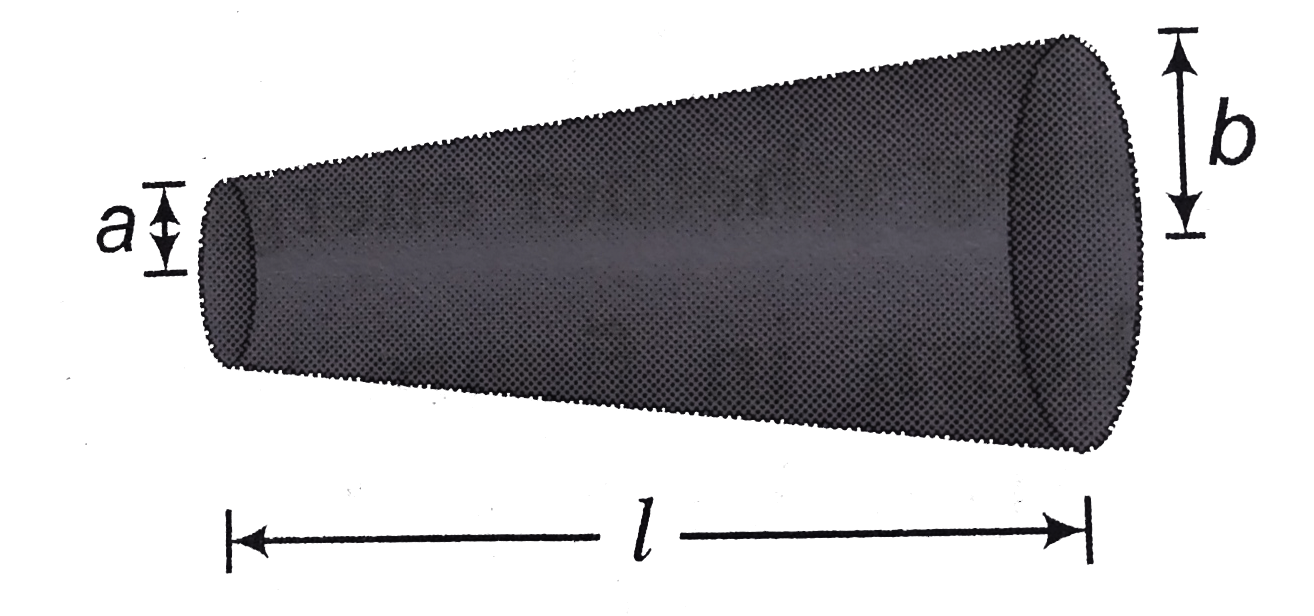A long round conductor of cross-sectional area S is made of material whose resistivity depends only on a distance r from the axis of the conductor as ρ=α/r2, where α is a constant. Find the total resistance per unit length of the rod when potential difference is applied across its length.
παS2
2παS2
πα2S2
αS2
The correct Answer is:B
To find the total resistance per unit length of a long round conductor with a resistivity that depends on the distance from the axis, we can follow these steps:
Step 1: Understand the Geometry
Consider a long cylindrical conductor with a radius R and cross-sectional area S. The resistivity of the material is given as:
ρ=αr2
where α is a constant and r is the distance from the axis of the conductor.
Step 2: Define a Differential Element
To find the resistance, we can consider a thin cylindrical shell (ring) of thickness dr at a distance r from the center. The area dA of this thin shell is:
dA=2πrdr
Step 3: Calculate the Resistance of the Differential Element
The resistance dR of this thin shell can be expressed using the formula:
dR=ρLA
where L is the length of the conductor (which we will consider as 1 unit length for resistance per unit length calculation), and A is the area of the shell. Thus, we have:
dR=ρ⋅1dA=αr2⋅12πrdr
This simplifies to:
dR=α2πr3dr
Step 4: Integrate to Find Total Resistance
To find the total resistance R of the conductor, we need to integrate dR from r=0 to r=R:
R=∫R0dR=∫R0α2πr3dr
Calculating the integral:
R=α2π∫R0r−3dr
The integral of r−3 is:
∫r−3dr=−12r2
Thus, evaluating from 0 to R:
R=α2π(−12R2−(−∞))
As r approaches 0, 1r2 approaches infinity, which indicates that the resistance diverges. However, we can consider the practical limits of the conductor.
Step 5: Express Resistance per Unit Length
For practical purposes, we can express the resistance per unit length R′ as:
R′=RL=α4πR2
Final Result
Thus, the total resistance per unit length of the rod is:
R′=2παS2
Consider a long cylindrical conductor with a radius R and cross-sectional area S. The resistivity of the material is given as:
ρ=αr2
where α is a constant and r is the distance from the axis of the conductor.
To find the resistance, we can consider a thin cylindrical shell (ring) of thickness dr at a distance r from the center. The area dA of this thin shell is:
dA=2πrdr
The resistance dR of this thin shell can be expressed using the formula:
dR=ρLA
where L is the length of the conductor (which we will consider as 1 unit length for resistance per unit length calculation), and A is the area of the shell. Thus, we have:
dR=ρ⋅1dA=αr2⋅12πrdr
This simplifies to:
dR=α2πr3dr
To find the total resistance R of the conductor, we need to integrate dR from r=0 to r=R:
R=∫R0dR=∫R0α2πr3dr
Calculating the integral:
R=α2π∫R0r−3dr
The integral of r−3 is:
∫r−3dr=−12r2
Thus, evaluating from 0 to R:
R=α2π(−12R2−(−∞))
As r approaches 0, 1r2 approaches infinity, which indicates that the resistance diverges. However, we can consider the practical limits of the conductor.
For practical purposes, we can express the resistance per unit length R′ as:
R′=RL=α4πR2
Thus, the total resistance per unit length of the rod is:
R′=2παS2
Topper's Solved these Questions
- CURRENT ELECTRICITYBOOK - AAKASH SERIESCHAPTER - CURRENT ELECTRICITYEXERCISE - ADDITIONAL PRACTICE EXERCISE (LEVEL -II LECTURE SHEET (ADVANCED) (Matrix Matching Type Questions))
2 Videos
- CURRENT ELECTRICITYBOOK - AAKASH SERIESCHAPTER - CURRENT ELECTRICITYEXERCISE - ADDITIONAL PRACTICE EXERCISE (LEVEL -II LECTURE SHEET (ADVANCED) (Integer Type Questions))
8 Videos
- CURRENT ELECTRICITYBOOK - AAKASH SERIESCHAPTER - CURRENT ELECTRICITYEXERCISE - ADDITIONAL PRACTICE EXERCISE (LEVEL -I(MAIN) (Straight Objective Type Questions))
20 Videos
- CURRENT ELECTRICITYBOOK - AAKASH SERIESCHAPTER - CURRENT ELECTRICITYEXERCISE - PROBLEMS (LEVEL-II)
27 Videos
- DUAL NATURE OF RADIATION AND MATTERBOOK - AAKASH SERIESCHAPTER - DUAL NATURE OF RADIATION AND MATTEREXERCISE - PRACTICE EXERCISEX
42 Videos
Similar Questions
The kinetic energy of a particle moving along a circle of radius R depends on the distance covered S as K =α.S2, where α is a constant. Find the force acting on the particle as a function of S.
View SolutionA long cylindrical conductor of radius R carries a current i as shown in the figure. The current density J varies across the cross-section as J=kr2, where, k is a constant. Find an expression for the magnetic field B at a distance r(<R) from the axis

View SolutionA particle placed
1.inside a uniform spherical shell of mass M, but not at the center
2.inside a uniform spherical shell of mass M, at the center
3.outside a uniform spherical shell of mass M, a distance r from the center
4.outside a uniform solid sphere of mass M, a distance 2r from the center
If F1,F2,F3 and F4 are gravitational forces acting on the particle in four cases.
View SolutionWhen a potential difference of 2 volt is applied across the ends of a wire of 5 m length, a current of 1 A flows through it. Calculate :
the resistance per unit length of the wire,
View SolutionA conductor of length L is placed along the x - axis , with one of its ends at x = 0 and the other at x = L. If the rate of flow of heat energy through the conduct is constant and its thermal resistance per unit length is also constant , then Which of the following graphs is/are correct ?
View SolutionThe area of cross-section of rod is given by A=A0(1+αx) where A0 & α are constant and x is the distance from one end. If the thermal conductivity of the material is K. What is the thermal resistancy of the rod if its length is l0?
View SolutionA direct current I flows in a long straight conductor whose cross section has the form of a thin halr-ring of radius R. The same current flows in the opposite direction along a thin conductor located on the axis of the first conductor. Find the magnetic induction froce between the given conductors reduced to a unit of their length.

View SolutionThe centre of mass of a non uniform rod of length L, whose mass per unit length varies as ρ=k.x2L where k is a constant and x is the distance of any point from one end is (from the same end)
View SolutionThe conductance of a solution of an electrolyte is equal to that of its specific conductance The cell constant of the conductivity cell is equal to
View SolutionA conductor of length l has a non-uniform cross-section. The radius of cross-section varies linearly from a to b. The resistivity of the material is ρ. Find the resistance of the conductc across its ends.

View Solution